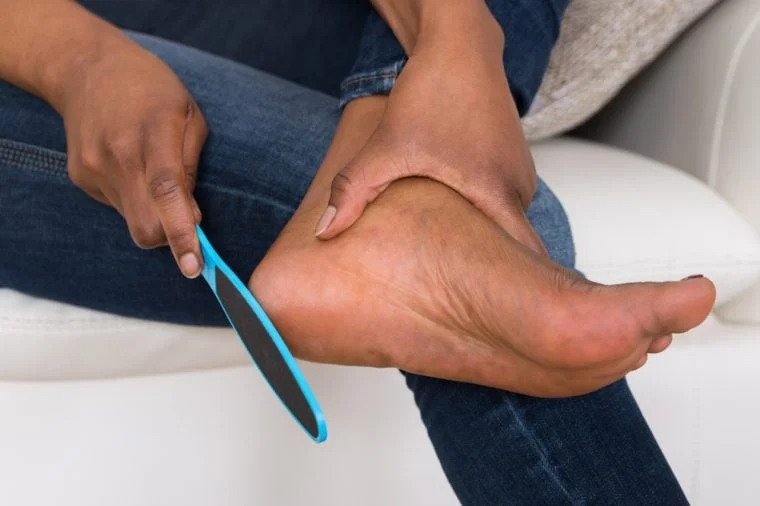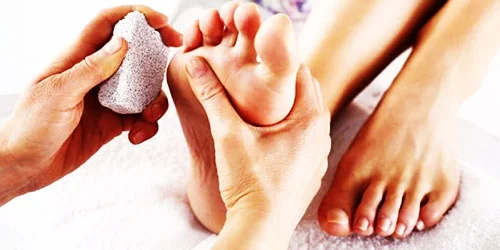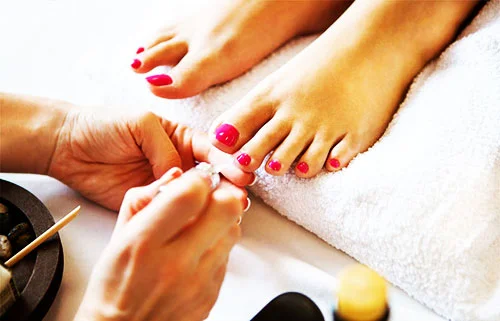Can you get HIV from a pedicure?
Can you get HIV from a pedicure? This question is more common than you might think, especially for anyone who’s ever worried about salon hygiene or gotten a small cut during a nail treatment. With so many rumors and myths online, it’s time to set the record straight. In this article, we’ll break down the facts, address your real concerns, and help you enjoy your next salon visit with confidence.
So you need to understand that in this article we want to mention the definite reasons.. Read more Nails bleeding after a manicure
How HIV Is Transmitted: Myths vs. Facts
Let’s start with the basics. HIV (Human Immunodeficiency Virus) is transmitted through direct contact with certain body fluids—mainly blood, semen, vaginal fluids, rectal fluids, and breast milk—from a person who has HIV. The most common ways HIV is spread include:
- Unprotected sexual contact
- Sharing needles or syringes
- From mother to child during birth or breastfeeding
- Blood transfusions (rare in countries with safe blood supplies)
But can you get HIV from a nail salon?
The answer is: It’s extremely unlikely. HIV does not survive long outside the human body, and it cannot be transmitted through casual contact, surfaces, or air.
Can You Get HIV from Nail Salon Tools?
This is a top concern for many: Can you get HIV from a nail salon, pedicure, or manicure tools?
Here’s what you need to know:
- For HIV to be transmitted, infected blood must enter your bloodstream through a fresh, open wound.
- Nail salon tools (like nail cutters, cuticle cutters, or files) would have to be contaminated with HIV-positive blood and used on you immediately after, without being cleaned.
- Proper sterilization kills the virus. Most reputable salons use hospital-grade disinfectants or autoclaves.
Related keywords used: can you get hiv from nail salon, can you get hiv from pedicure, can you get hiv from cuticle cutter, nail salon hiv, hiv from pedicure
What Happens If You Get Cut at a Nail Salon?
Accidents happen. Maybe you got a small nick during a pedicure or manicure. Should you be worried about HIV?
- The risk is extremely low. Even if a tool had traces of blood, HIV does not survive long on surfaces.
- If you get cut, the main risk is a bacterial or fungal infection, not HIV.
- If you’re concerned, ask the technician about their sterilization process and clean the wound with antiseptic.
Related keywords used: cut at nail salon hiv, i got cut at the nail salon should i be worried about hiv, can you get hiv from nail salon cut
Can You Get HIV Through Cuticles or Manicure Procedures?
Some people worry about can you get HIV through cuticles or from a manicure. Here’s the science:
- The cuticle area is delicate, but unless there is direct blood-to-blood contact with contaminated tools, HIV transmission is not a risk.
- Standard manicure and pedicure procedures do not involve exposure to blood.
- If you have open wounds or sores, it’s best to wait until they heal before visiting a salon.
Nail Salon Hygiene: How to Stay Safe
While HIV is not a realistic risk, other infections are more common in nail salons. Here’s how to protect yourself:
- Choose reputable salons that sterilize tools after every client.
- Look for single-use tools (like nail files and buffers).
- Ask about their cleaning process—a good salon will be happy to explain.
- Bring your own tools if you’re extra cautious.
- Avoid services if you have open cuts or sores.
Pro tip: If you see technicians reusing tools without cleaning, it’s a red flag. Walk away!
Other Infections from Nail Salons: What’s More Likely Than HIV?
While “can you get HIV from the nail salon” is a common search, the real risks are:
- Fungal infections (like athlete’s foot or nail fungus)
- Bacterial infections (such as impetigo or cellulitis)
- Viral infections (like HPV, but this is rare)
Why?
Bacteria and fungi are much more resilient on surfaces than HIV. They can survive in warm, moist environments like foot baths or on unsterilized tools.
Can Fish Pedicures Cause HIV or Other Risks?
You might have seen “can fish pedicure cause HIV” trending online. Here’s the truth:
- There are no documented cases of HIV transmission from fish pedicures.
- The real risk is bacterial infection from the water or the fish themselves.
- Many health authorities have banned fish pedicures due to hygiene concerns, but not because of HIV.
Real Stories: I Got Cut at the Nail Salon—Should I Be Worried About HIV?
Let’s get real. Many people have gotten a small cut at a nail salon and panicked about HIV. Here’s what experts say:
- No confirmed cases of HIV transmission from a nail salon have been reported.
- If you’re worried, clean the wound, watch for signs of infection, and talk to your doctor for peace of mind.
- Remember, the main risk is a minor skin infection, not HIV.
Can we truly get Hiv from pedicures or not?
A pedicure can not give us HIV; there are lots of reasons that will cause HIV, which can be important. So you need to understand How this can be done for lots of reasons. So HIV is different, and it is based on cleanliness things for the people. So, the area that you want to pedicure in is good, and you need to consider it.
How do you get HIV?
What are the pedicure procedures?
The pedicure has different processes which can be important, and we want to mention them below:
- Foot Soak: The feet are soaked in warm water or a foot bath to help soften the skin and relax the feet. Sometimes, salts, essential oils, or other additives are used in the soak for added benefits.
- Nail Trimming and Shaping: This part is related to the shapes and other things that are related to your nails.
- Cuticle Care: The cuticles around the nails are pushed back or gently trimmed to ensure a clean and neat appearance. Cuticle oil or cream may be applied to moisturize and nourish the cuticle area.
- Callus and Dead Skin Removal: This part can be done by a specialist in pedicure, which is cool. You need to understand that skin removal is important.
- Foot Massage: Foot Massage is great because it can be part of a pedicure that is related to your foot.
- Moisturization: This part can be related to lots of different things. But moisturization is great for pedicure.
- Nail Polish Application: If desired, nail polish can be applied to the nails after the necessary preparations. Polishing is great because it can be effective.
So, all the treatments and processes can be great here. It’s always a good idea to communicate your preferences and any specific concerns or requests to the pedicurist before the procedure begins.
What will make us get HIV from pedicure?
The transmissions of the viruses can be done below reasons:
- Contact by blood: Blood can be one of the most important things that you can get HIV, which is important.
- Needle sharing: Sharing needles or other equipment contaminated with HIV-infected blood can transmit the virus. Needle sharing does not apply to a standard pedicure procedure.

How pedicure is effective for us?
A pedicure can affect us through different things like below:
- Foot Hygiene: This reason is based on you because you should consider all foot Hygiene, which can be important.
- Different types of skin care: Skin care can be the most important thing that is related to pedicure. Different types of skin care can improve the appearance of the feet and reduce dryness or rough patches.
- Moisturization: Pedicures usually involve moisturizing the feet and lower legs. The moisturization helps to hydrate and nourish the skin, keeping it supple and preventing dryness or cracking. Nail Care Pedicures address the care and maintenance of the toenails. Trimming and shaping the nails can prevent issues like ingrown toenails, which can be painful and lead to infections.
- Relaxation and Stress Relief: All types of relaxation can be done by specialist people who are working toward pedicure based on your needs.
- Aesthetics: Pedicures can enhance the appearance of the feet. You should consider thins because of the shapes of your toenails.

Conclusion
Have you ever worried about HIV or other infections at the nail salon? Share your experience in the comments below! If you found this article helpful, please share it with friends and explore more of our guides for safe, enjoyable self-care.
Summary: The Truth About HIV and Nail Salons
So, can you get HIV from a pedicure?
The answer is almost certainly no—especially if you choose a clean, reputable salon. The risk of HIV from nail salon tools, cuts, or cuticle care is so low it’s nearly impossible. Focus on salon hygiene to avoid more common infections, and enjoy your self-care routine with confidence.
Faq about getting HIV from a pedicure
Can HIV be transmitted through nail cutters?
This transmission of HIV by shared manicure equipment is a very rare event that should serve not to make people fear HIV or contact with HIV-infected people.
What to do if a manicurist cuts you?
Applying clean gauze to the wound with pressure to stop the bleeding is the first priority. Once the bleeding has stopped, the wound should be carefully cleaned with an antiseptic. A topical ointment should be applied along with an adhesive bandage.
What is the risk of infection in the salon?
Both clients and operators are at risk. The main risks, albeit low, include bacterial skin infections, such as impetigo. fungal skin infections, such as tinea and ringworm.
What are the risks in the salon?
Here are some of the potential hazards faced in hair salons–and some strategies on how to prevent them.
- Ergonomic hazards
- Chemical hazards
- Burns and cuts
- Slips, trips, and falls
- Noise hazards
- Mental health
- Fire hazards
Can you get HPV from a nail salon?
HPV-Linked Skin Cancer of the Nail May Not Be a Common Result Of a Manicure, Expert Says. Skin cancer can also occur in the nail area and may be associated with HPV, it may not be as common for it to result from a cut experienced during a manicure, one expert explained.
Can you get hepatitis from a nail salon?
Fortunately, the risk of being infected with hepatitis or HIV in a U.S. nail salon appears to be low. For instance, in the United States, only 5 percent of people with chronic hepatitis B or hepatitis C have no identifiable risk factors
Is it common to get an infection from a nail salon?
Can you really pick up infections or nail fungus at salons? You can. Anytime your nails are getting wet, cut or filed—or your cuticles are being trimmed—it is an opportunity for bacteria and fungi to get in under the nail. Both bacteria and fungi can cause nail infections and are very common in the environment.
Read more:
- Why does my nail polish look dirty?
- What to wear for a pedicure?
- Why do nail salons cut the sides of toenails












Thanks alot for your best article. one of my question is HIV a risk in the salon?
Biological hazards include bacteria, fungi, and viruses. Nail salon workers can be exposed to bloodborne pathogens, such as hepatitis B, hepatitis C, and human immunodeficiency virus (HIV), if they come into contact with infected blood from a co-worker or client.